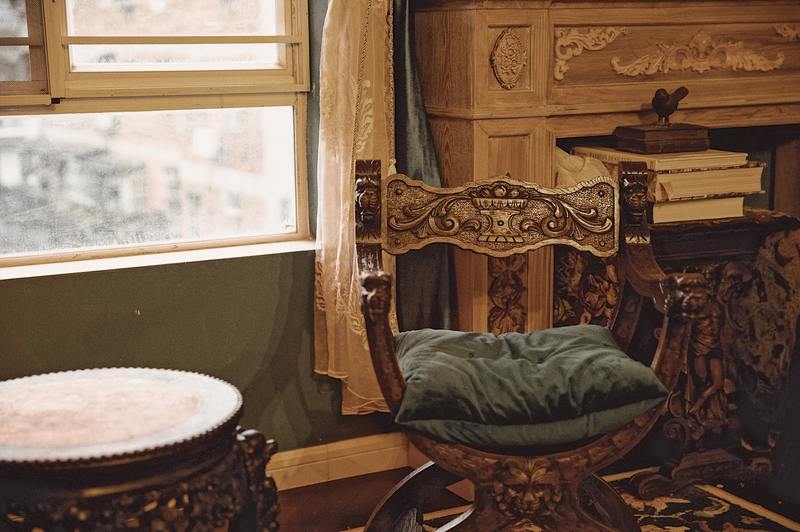If you’re an antique collector, you need to know how to tell age of chair to avoid getting ripped off! After all, you can make wads of cash from buying an antique chair and selling it at an auction. All you have to do is look everywhere and train your eye at spotting treasure.
In this article, you will learn how to tell the age of an antique chair. There are certain signs of aging one must look for. Before you buy what you believe is an antique, you need to distinguish a real antique from an imitation.

The Basics Of Buying Antiques
Of course, the smartest thing to do is to seek an expert on antiques. By now, you must understand how furniture gains value as they withstand time, and a long one at that. If the one in your possession is machine-made and newly created, it’s practically worthless.
Aside from the fine artistry evident in antique chairs, age matters, too. You need to consider the spectators for the piece. In general, any chair fifty years in age or older is considered an antique, while more sophisticated dealers declare only those surpassing the 150-year mark as authentic.
Criteria For Antique Chairs
Furniture cut by machines didn’t exist until 1860, and thus was assembled by hand. For obvious reasons, non-antiques are more symmetrical. Meanwhile, the imperfections found in antiques are actually the tell-tale signs of authenticity.
To help date back an antique chair in question, you can look at the finish on the wood. What was commonly used for antiques are shellac. Unlike lacquer, which was developed around the 1800s, shellac has been around and was popular during the Victorian times.
Hence, any piece of wooden chair made before 1860 is probably coated in shellac. Further still into the past, older chairs would have oil and wax. So as not to purchase counterfeits, stay clear of chairs with lacquer or varnish as finish.
Test The Finish Of The Chair
In a showroom, telling the finish apart from each other can be elusive as an eel. To fully ensure the authenticity of an antique, you must at least examine a small portion. Politely ask the dealer if you can test out the finish of the furniture.
Bring along with you a tiny amount of denatured alcohol. To confirm if the finish is shellac, the spot applied to it must dissolve. In case the piece is painted, you must resort to the use of ammonia, since only ammonia can dissolve milk paint.
What if the furniture is coated in dust, too dirty, or covered in wax? Then, you must clean the area first. In equal parts, prepare a mixture of kerosene, vinegar, and denatured alcohol to clean the deep-seated dirt.
Examine The Type Of Wood Used
Your final clue is the type of wood used. Before 1700, oak was very popular among woodworkers. After that, since the supply diminished gradually, mahogany and walnut replaced the oak.
With antique imitations, you are most likely to encounter pine, since it’s relatively common and easy to work with. However, in the art of furniture making, the same types are favored over the others. Examples of staple wood are cherry and maple.
Is restoration worth it for antiques?
When you come across a piece you love beyond measure, the first thing you should do is assess its condition. Antiques, over the years, will suffer innumerable damages, which you can restore. Once you confirm the piece to be an antique, restoring it will reap huge returns in its value.
However, there are cases when restoration becomes impractical. In the presence of dry rot, the sections severely affected must be replaced, and this can cost a lot. On the other hand, insect damage can make the entire ordeal hopeless.
How do I find the original markings?
Artisans long ago used metal labels to mark their furniture to indicate the manufacturer. Although the practice is less common now, this can be a helpful tool at spotting antiques. Since they fade over time, they might be less obvious, but traces of the marking will remain.
Spotting the markings can present a challenge, since they fade over time. Hence, you should inspect the common places where they appear — at the bottom or at the frame. To make your job easier, be armed with knowledge as to what model of furniture you’re looking at because style varies, too.
What kind of tools did the artisans use?
More often than not, artisans used their own hands rather than relying on a machine. For this reason, smoothing down the piece of wood with band planes left uneven surfaces. Tools for shaping the wood include hand chisels, which would leave nicks on the wood.
More recent pieces of furniture are machine-made. Circular saws left circle marks, as opposed to straighter lines found on hand-operated saws.
Conclusion
As an antique collector, you must learn how to tell age of chair without fault. There are many people out there taking advantage of unsuspecting buyers, so you must always keep your guard. Keep in mind the tips you learned in this article when you are in the showroom.

Need help identifying 2 baltimore side chairs I picked up for 2 dollars.
I beleave they are 1860 time frame.
Would love to get a few minutes of your time to validate and authentic these chairs.
Look forward to your response respectfully Greg